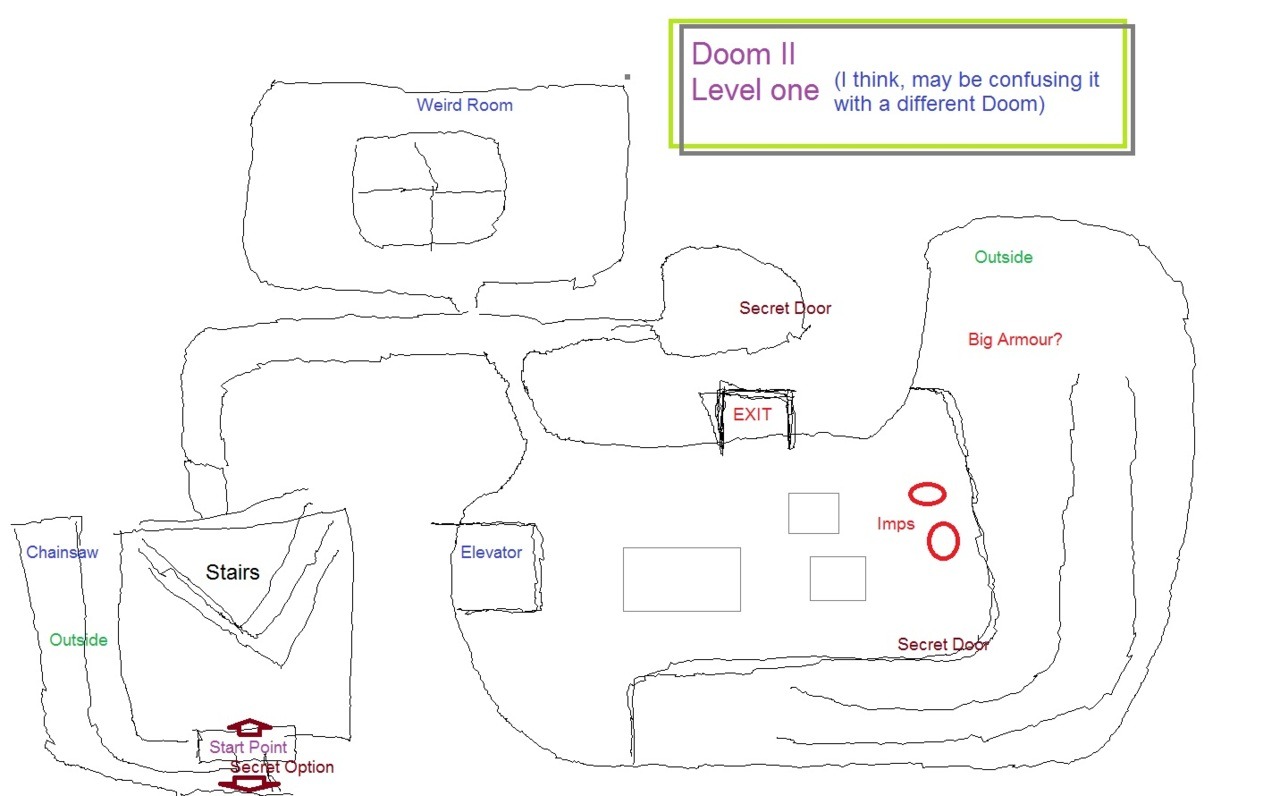Assignment Overview
To ask for a map is to say, “Tell me a story.”
Peter Turchi, The Writer as Cartographer

Doom 2, E1M1, by Leek, posted at Mapstalia
Every map has its own story to tell. . . . Imagine an atlas with a structure ordered to tell a story greater than those told by each individual map, an atlas with something more clearly on its mind than keeping the maps off the floor.
Denis Wood, Everything Sings

Jack-o-Lantern Map of Boylan Heights by Denis Wood
Mental maps, however cognitively housed, are socially constructed. They are a particular form of ‘imagined geography’ that illustrate the complex relationships between the social and the spatial. . . . Mapping, then, in in all od its overlapping forms, contributes to geographic rhetorics by insisting upon the real and imagined production of space and more complex ways of representing places and spaces.
Nedra Reynolds, Geographies of Writing

HIV Prevalence by Worldmapper
In the case of GPS, what does it mean to locate? What are the cultural, ethical, or political implications of creating a mapped space in which the knowing or unknowing user or subject wittingly or unwittingly resides?
Amy Propen, “Critical GPS: Toward a New Politics of Location”
![]()
Screen shot of the GPS Tracker app Details page in the iPhone App Store
Assignment Specifics
For this assignment, you are going to create an atlas of geographical stories by putting together a collection of maps of a particular local space. You have three options for this project:
- Compose a series of 5 – 7 maps of a space of your choice
Rowan Universityin the vein of those composed by Denis Wood of Boylan Heights that tell a particular story of that space. The collection of maps (or atlas) will be accompanied by an 1 page double spaced introduction in which you discuss the goals of your project and a 3 – 5 page double spaced interpretation of the maps in terms of our readings on mapping and semiotics.[This is the assignment I’d love to see, but it needs full class buy-in to make it really work, to generate the most number of new maps. It is also the one that is never chosen.] - Compose a memory map of a particular local place and then ask 8 – 12 people to compose a memory map of the same space (you must compose yours first and do not show the people your map; nor should people be in the same place when composing theirs; have a diverse population; do not use students in this class; people should not be in that location when composing it as it should be made from memory). The collection of maps (or atlas) will be accompanied by a 1 page double spaced introduction and a 3 – 5 page double spaced interpretation of the maps in terms of our readings on mapping and semiotics.
- Using a GPS tracking app (such as GPS tracker, which is available for and allows you to track users on the iPhone and Android) track your movements during your waking hours and then ask 8 – 12 people to allow you to follow them for 1 day using the GPS tracker app. [Immediately screen shot and/or download their maps when completed; zoom in to interesting places and screen shot those, as well.] The collection of maps with their locations pinned across it will be accompanied by an 1 page double spaced introduction in which you discuss the goals of your project and a 3 – 5 page double spaced interpretation of the maps in terms of our readings on mapping and semiotics.
When thinking about a particular local setting, think in terms of various physical and virtual spaces. Local can mean a house or apartment, or Bozorth Hall, or the 4th floor of the library, or Rowan University, or World of Warcraft.
If you are doing option 2, please be sure to record the person’s name, age, and contact information, and let them know that their work is part of a class project and the maps will be posted online (anonymously, if they would like).
Presenting Your Work
We will be turning in the work as Word docs in a course Dropbox folder, via Issuu.com, “the leading digital publishing platform delivering exceptional reading experiences of magazines, catalogs, and newspapers,” and as a blog post on the course blog. Issuu takes individual pages and merges them together into a seamless magazine style publication, as seen in prior student work:
Option 1:
Option 2:
Your final project should have an appealing cover page, your introduction, the maps, and the analysis. On the day your drafts are due we will go over tips for putting together your atlas.
Due Dates
2/3: tweet your mapping project proposal using only 1 tweet and leaving room for #vrmcs14 and #mproj
2/13: rough draft due by class time (this includes all maps and the introductory text)
2/20: final draft due in Dropbox, as an Issue publication by 11:00pm (compose a blog post that includes an excerpt of your introduction and one or maps in the collection and link to your Issuu publication—it is not possible to embed the publication in a WordPress.com blog)